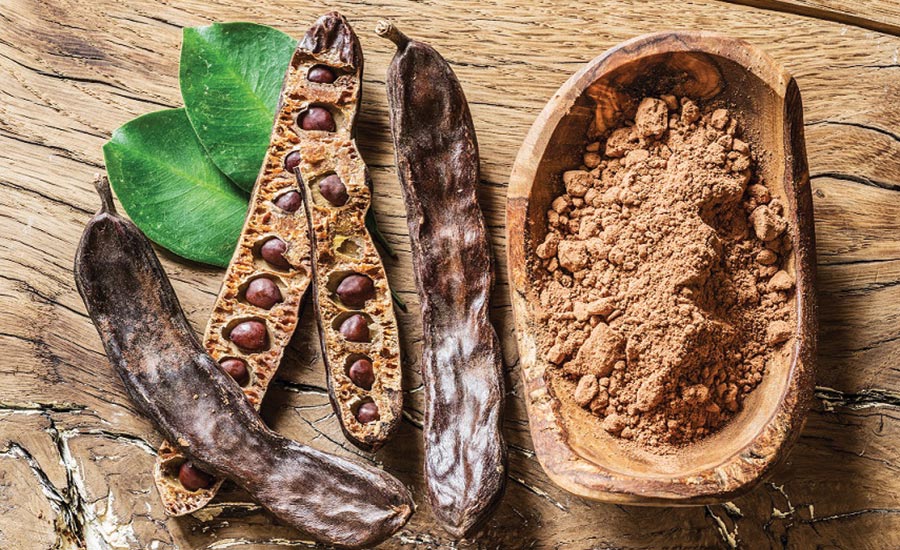Weight management may have been replaced by a “whole health” approach, but it’s still a key issue and calls on protein, fiber, probiotics, and botanicals as well as fat and sugar replacers for crafting food and beverage products that help folks lose or maintain weight.
Where the focus in developing foods and beverages for better weight management once was on sweeteners and calorie cutting, today’s weight-management products reflect the protein trend, especially the emphasis on plant proteins. As plant-protein ingredients continue to gain ground, new introductions to the market offer formulators more options to experiment with.
Among the current flood of plant proteins, one that is showing incredible promise is that of protein from duckweed (from the genus Wolffia), also called water lentils. As the smallest flowering plant, minimally processed concentrate from its leaves is considered a “whole food,” yielding a nutrient-rich ingredient that consists of up to 47% protein with 35-40% fiber. This makes it an ideal addition to weight-management products.
Water lentil concentrate also has more essential amino acids w/w than soy or pea protein, and unlike many plant proteins, it is high in lysine. It also has high digestibility and is rich in branch-chain amino acids. Another attraction of water lentils is that in the wild they’re a non-invasive species, both indigenous and ubiquitous. As a commercial ingredient, water lentils are typically grown in protected ponds and processed without the use of chemicals or additives.
The ingredient also is highly sustainable: the water used during processing of water lentils is typically recycled and reused. Water lentil concentrate can be used in multiple applications, from baked goods to meal replacers, smoothies, soups, and sauces. The protein can even be used to make a substitute for tofu.
The pulse-based ingredient market is expanding rapidly, due to both the plant-based revolution that has seen incorporation of legumes into meat and dairy alternatives and new extrusion technologies that make it easier to control product textures. For the consumer interested in sustainability, pulses add nitrogen back to the soil, thereby decreasing the reliance on synthetic fertilizers, which not only reduces cost but also leads to lower greenhouse gas emissions. Pulses improve soil and break disease and insect cycles.
Whole Food Approach
Pulses and seeds, especially chia seeds, are far from new, but they’ve been gaining significant attention recently for their status as “whole food” ingredients. These ingredients help meet consumer demand for nutrient-rich weight-management products that contain protein, fiber, and healthful fats and contribute to “clean-label” parameters.
Pulses and seeds also are packed with vitamins, minerals, and antioxidants. In fact, studies indicate that consumers who eat at least half a cup of pulses per day have higher intakes of fiber, protein, folate, zinc, iron, and magnesium, as well as lower intakes of total and saturated fat.
Aside from improved diet quality, a systematic review and meta-analysis of randomized controlled trials found that those consuming just one daily serving of pulses lost an average of 0.75lb over six weeks compared to those who didn’t include pulses in their diet. Though 0.75lb. might seem trivial, the diets in the studies analyzed were intentionally not calorie-restricted. Additional research shows that bean intake is correlated to smaller waist circumference in adults.

Soluble, fermentable non-digestible fibers such as inulin help control appetite and calorie intake by both physical and biochemical means. PHOTO COURTESY OF: Beneo, Inc. (www.beneo.com)
Including chickpeas, lentils, peas, or beans in an array of different foods, whether flours for bakery and snack applications, protein powders, dairy product alternatives, or other products gives formulators unlimited opportunities. Pulses are an excellent choice for weight management as they contain soluble fiber that may slow down digestion and absorption, and their high protein content leads to the release of hormones that signal fullness.
Among seeds, chia seeds are proven to be an excellent bulking agent in formulations, as they absorb approximately 12 times their weight in water. They have a neutral flavor and can even be used in vegan formulas to replace eggs in the same manner as the currently popular aquafaba. One part chia seeds to three parts water is a standard ration for such replacement. A randomized controlled trial found chia seeds can boost short-term satiety.
Go With the Gut
The prebiotic effects of certain fibers, such as fructans (oligosaccharides like inulin from chicory root), resistant starches, and polysaccharides, have demonstrated abilities to boost satiety both through the sense of fullness they provide and the chemical changes they trigger. In this manner, they can contribute to healthful formulations geared toward managing appetite and energy balance.
One challenge in incorporating certain fibers into products is the capacity for some of them to lead to bloating or gastrointestinal discomfort. Maltodextrin, a digestion-resistant soluble corn fiber, is recognized as having prebiotic capacity but without undesired side effects. Research has shown that 10g of soluble corn fiber with a meal stimulates the production of satiety hormones and delays post-meal hunger in healthy adults. Moreover, it can help reduce the amount of sugar released into the blood stream.
Soluble corn fiber is fermented in the colon at a slower rate compared to other soluble fibers. This helps minimize gastric distress. Soluble corn fiber is also irritable bowel syndrome (IBS)-friendly per Monash University, the leading FODMAP (Fermentable Oligosaccharides, Disaccharides, Monosaccharides, and Polyols) research institute. FODMAP-friendly foods are those that do not aggravate the gut or promote IBS symptoms such as intestinal bloating and digestive discomfort.
Soluble corn fiber can be formulated into nearly any food or beverage application. It is appearing more often in sports/energy bars and other foods because it is easy to include from a taste and texture standpoint. Since its flavor profile is neutral, it can be used to balance other flavors and can help improve acceptability of some proteins, zero-calorie sweeteners, and other ingredients that are usually avoided due to off, bitter, or harsh flavor notes.
Getting Biblical

Carob (Ceratonia siliqua L.) is an ancient pod fruit grown throughout the Mediterranean and mentioned often in the Bible. It is rich in soluble fibers, such as galactomannan, fructo-oligosaccharides (FOS), as well as antioxidant compounds known as polyphenols. Research has demonstrated that these can work synergistically to aid in limiting excessive calorie consumption, reduce unhealthy eating habits, and prolonging the feeling of satiety. Moreover, these active compounds in carob have been shown to mitigate symptoms of Metabolic Syndrome (MetS), prevent MetS-induced hypertension, attenuate endothelial dysfunction, and increase vascular sensitivity to insulin. In studies on heart function, these same phytochemicals exhibited reduced instance of muscle cell death and prevented decrease in cardiac contractility as associated with a lower expression of pro-inflammatory and oxidative free-radical markers in the both the heart and the aorta.
Turning Pro
The primary benefit of prebiotic fibers is that they provide food for beneficial bacteria in the digestive tract. This includes the probiotic bacteria introduced into the digestive tract via cultured and fermented foods. The importance of this action to weight management is based on numerous studies that have established an association between obesity and structural and functional changes in the gut microbiome.
There are several mechanisms through which the gut microbiota can help influence obesity, including dietary carbohydrate fermentation, lipogenesis, managing excess energy storage, and influencing metabolites, hormones, and neurotransmitters involved in food intake and energy balance regulation. This points to the microbiota as a significant — and often overlooked — target for weight-management product development.
Among the scores of probiotic strains used in food and beverage making, one is worth particular note: Bifidobacterium animalis lactis CECT 8145 (Ba8145). This friendly microbe is specifically marketed for abdominal visceral fat reduction and healthy weight management. A randomized, double-blind, placebo-controlled trial in adults with abdominal obesity found 1010 colony-forming units (CFU) of Ba8145, consumed daily over 12 weeks, led to significantly decreased waist circumference. (It should be noted that this could suggest fat reduction, a decrease in bloating, or both.)
Also, consumption of 1010 colony-forming units of heat-treated Ba8145 led to a significant decrease in visceral fat area. The level of significance was borderline vs. the placebo group, however, when adjusted for waist circumference. But coupled with the rest of the study’s results and the lack of negative outcomes, results indicate that this microbial strain can be of significant value in probiotic weight-management products.
Importantly, the heat-treated form of Ba8145 is eminently suitable for products often incompatible with more delicate probiotics, such as baked goods and snacks, and virtually any beverage application. Neither the heat-treated nor the non-heat-treated Ba8145 affect the organoleptic attributes of finished products.
New Horizons
Xanthophylls, carotenoid compounds found in seaweed, paprika, and other plant foods, also may hold some promise for fat loss. A 12-week randomized, double-blind, placebo-controlled study in overweight healthy adults revealed that 9mg of paprika-derived xanthophylls reduced visceral abdominal fat compared to the placebo. Also, those subjects taking paprika xanthophylls experienced a significant decrease in subcutaneous fat area, total fat area, and BMI in that same time period. Additional research suggests xanthophylls might prevent fat cell growth and inhibit the formation of new fat cells, even while enhancing the breakdown of fat for use as energy.
While various compounds extracted from seaweed, especially the xanthophyll fucoxanthin, have been studied for their potential anti-obesity effects, whole seaweed could be advantageous as well. A study in overweight healthy men found that bread enriched with Ascophyllum nodosum seaweed at 4% per 400g whole-meal loaf led to a significant decrease in calorie intake (16.4%) at a test meal 4 hours later, compared to the placebo. Previous research found that seaweed incorporated at that level is acceptable to participants as far as taste and texture.

New fat technologies are giving formulators ways to create food products with dramatically reduced calories yet favorable sensory experiences. PHOTO COURTESY OF: Epogee, Inc. and Fooducate, Ltd. (www.epogee.com; www.fooducate.com)
In spite of the daily barrage of diet plans and fads, at the end of the day the fundamental formula for weight loss is “calories out > calories in.” Energy from fat, at 9kcals/g, is more than double that of carbohydrates and proteins and their 4kcals/g each. Moreover, fat is a flavor carrier, making it even harder to eliminate from a formulation. An esterified propoxylated glycerol (EPG) — a brand-new, non-GMO fat replacer made from rapeseed (canola) oil — could lead to a major paradigm shift in diet products.
EPG delivers the same mouthfeel, taste, and appearance as fat. The manufacturers of this modified plant-based oil split rapeseed oil into glycerin and fatty acids, then inserted a food-grade propoxyl connector to reattach the fatty acid and glycerin. This propoxyl link is resistant to digestive enzymes.
Unlike previous fat replacers, EPG does not lead to unwanted gastrointestinal side effects. It can be used to replace from 50% to as much as 85% of the fat in a formulation, depending on the application. This can lead to a decrease of up to 92% of calories from fat, and up to 45% of total calories in the finished product. EPG is gluten-free, allergen-free, trans-fats-free, vegan, and kosher, and has a neutral flavor profile that adapts to the flavor of the product in which it is formulated.
EPG recently received GRAS status for use in confections, bars, baked goods, mixes, frozen dairy and desserts, spreads, dips, gravies/sauces, snack foods (including chips), chicken nuggets, plant-based protein products, beverages (including coffee- and tea-based drinks), dairy analogs, peanut and other nut butters, grain products, and pastas. It even is suitable for, and has been approved for, use in frying. Although satiety research has yet to be published, in the field of edible fats, EPG could prove to be something of a “holy grail” for product developers as a calorie-free fat with full function.
Sweet Side
The only thing as significant as a “calorie-free fat” is an ultra-low-calorie sugar that looks, tastes, and behaves just like sugar in formulations. Enter allulose. It exists in nature in very small quantities in wheat, jackfruit, figs, and raisins. However, allulose can be made at scale via enzymatic conversion of fructose from corn, or derived from beets or wheat.
Allulose is a 1:1 replacer for sucrose or crystalline fructose in most formulations, with a flavor profile between sucrose and fructose. It is 70% as sweet as sucrose, yet with no aftertaste. Allulose is not absorbed by the body and yields contains only 0.4 calories per gram, resulting in a negligible impact on blood sugar and insulin.
A major benefit of allulose in production is that it functions similarly to sucrose. It provides bulking and Maillard browning, and lowers the freezing point of frozen products. It readily dissolves and works well in baked goods and frozen desserts. Moreover, with a flavor closer to crystalline fructose than the more earthy sucrose, its sweetness profile is more prominent in many formulations, meaning the slightly lower sweetness percentage is not readily noticeable.
Consumers are more discerning than ever. They want clean labels, sustainably produced ingredients, and nutrient-rich finished products that also taste really good. While formulators have an array of protein, fiber, and nutraceutical ingredients to work into weight-management products that have universal appeal, they can now add whole foods and fat and sugar replacers that mimic the real thing. Consumers can look forward to benefitting from next-generation, nutritious weight-management products that satisfy the need for healthy meals and indulgent snacks.





